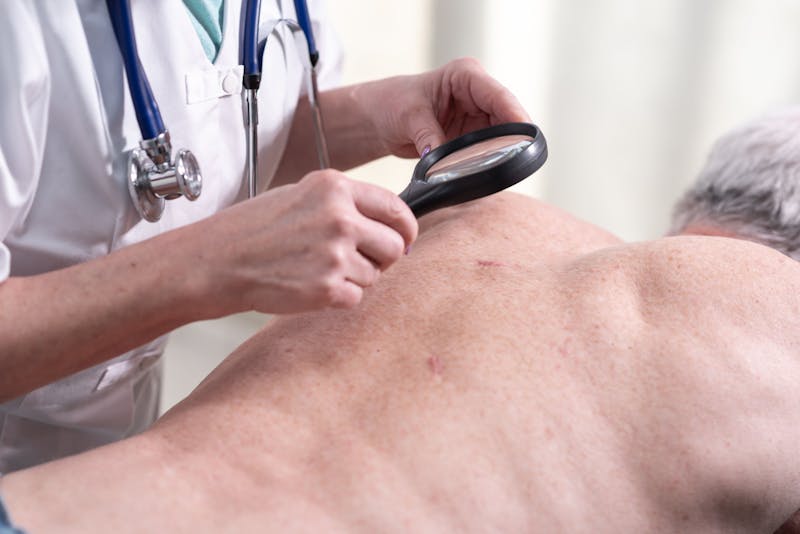Your Family Deserves the Best Care Book an Appointment
Your skin health matters, so don’t delay. Our clinicians look forward to treating you and your family at one of our local New England practices.
Find Your Nearest APDerm Center
Skin cancer is the most common cancer in the United States, and melanoma is its most serious form. When caught early, melanoma is highly treatable—but recognizing the signs is key. Dermatologists use a simple, life-saving guide to help patients identify suspicious moles or lesions: the ABCDEs of melanoma.
Normal moles are typically symmetrical—if you draw an imaginary line through the middle, both halves should match.
If one side looks different from the other, that’s a warning sign. Asymmetry can mean uneven shape, color, or surface.
Benign moles have smooth, well-defined borders.
Melanomas often have irregular, blurred, or jagged edges that fade into the surrounding skin rather than forming a clear outline.
A healthy mole is usually a single, uniform shade of brown or tan.
Melanomas, on the other hand, may include multiple colors—shades of brown, black, red, white, or even blue. Uneven pigmentation is one of the most common early signs.
Most melanomas are larger than 6 millimeters (about the size of a pencil eraser) when diagnosed, though they can start smaller.
Any mole that appears to be growing should be checked by a dermatologist.
Perhaps the most important sign: change.
If a mole is evolving—meaning it changes in size, shape, color, or begins to itch, bleed, or crust—schedule a skin exam immediately. Evolution can signal that something abnormal is happening beneath the surface.
When found early, melanoma has a 99% five-year survival rate. But once it spreads to other parts of the body, that number drops significantly. That’s why monthly self-exams and annual skin checks with a dermatologist are essential for everyone—especially those with fair skin, a history of sunburns, or a family history of skin cancer.
If you notice a mole that looks suspicious, don’t wait. Schedule a skin exam with one of our board-certified dermatologists today.